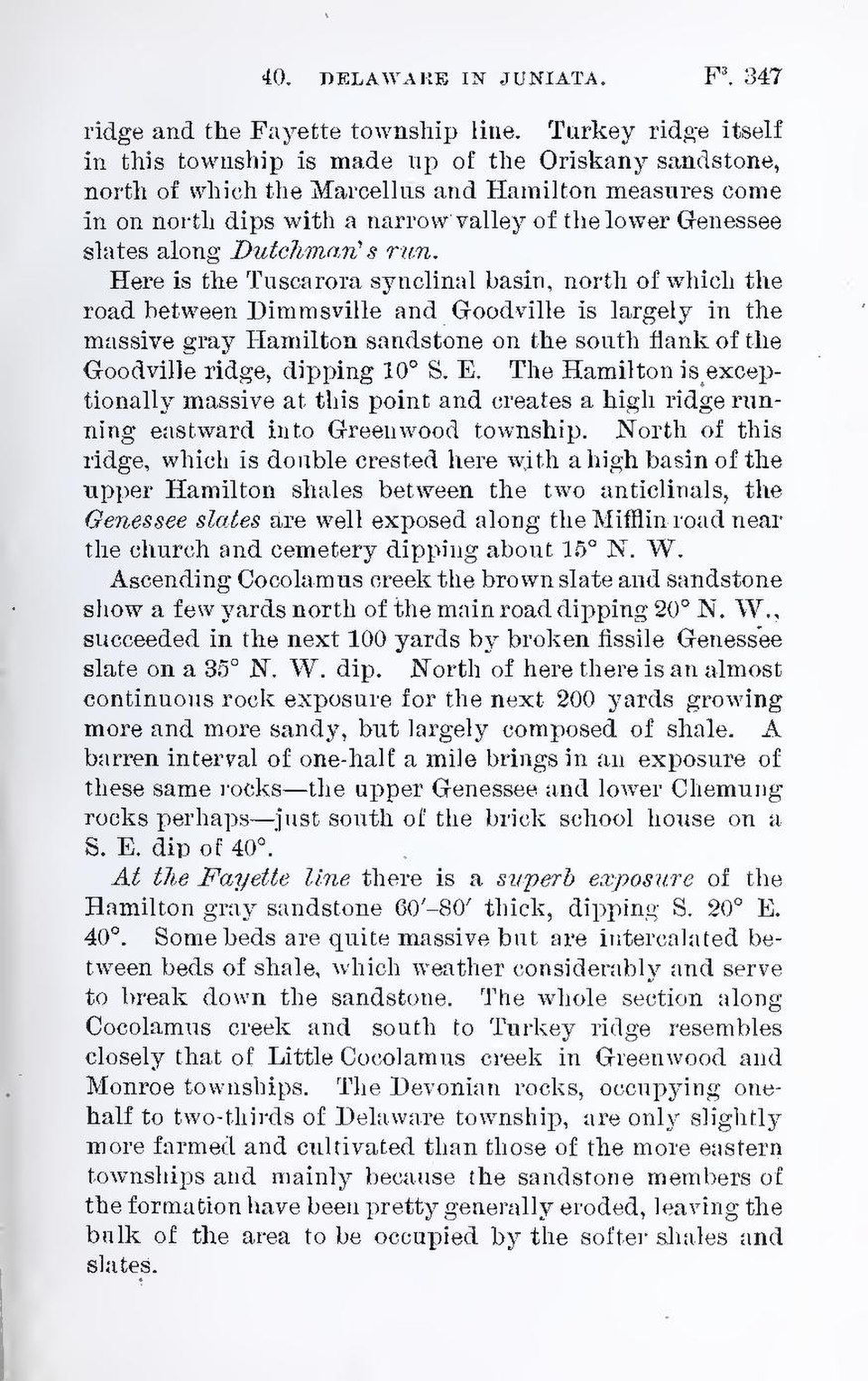ridge and the Fayette township line. Turkey ridge itself in this township is made up of the Oriskany sandstone, north of which the Marcellus and Hamilton measures come in on north dips with a narrow valley of the lower Genessee slates along Dutchman’s run.
Here is the Tuscarora synclinal basin, north of which the road between Dimmsville and Goodville is largely in the massive gray Hamilton sandstone on the south flank of the Goodville ridge, dipping 10° S. E. The Hamilton is exceptionally massive at this point and creates a high ridge running eastward into Greenwood township. North of this ridge, which is double crested here with a high basin of the upper Hamilton shales between the two anticlinals, the Genessee slates are well exposed along the Mifflin road near the church and cemetery dipping about 15° N. W.
Ascending Cocolamus creek the brown slate and sandstone show a few yards north of the main road dipping 20° N. W., succeeded in the next 100 yards by broken fissile Genessee slate on a 35° N. W. dip. North of here there is an almost continuous rock exposure for the next 200 yards growing more and more sandy, but largely composed of shale. A barren interval of one-half a mile brings in an exposure of these same rocks—the upper Genessee and lower Chemung rocks perhaps—just south of the brick school house on a S. E. dip of 40°.
At the Fayette line there is a superb exposure of the Hamilton gray sandstone 60′–80′ thick, dipping S. 20° E. 40°. Some beds are quite massive but are intercalated between beds of shale, which weather considerably and serve to break down the sandstone. The whole section along Cocolamus creek and south to Turkey ridge resembles closely that of Little Cocolamus creek in Greenwood and Monroe townships. The Devonian rocks, occupying one-half to two-thirds of Delaware township, are only slightly more farmed and cultivated than those of the more eastern townships and mainly because the sandstone members of the formation have been pretty generally eroded, leaving the bulk of the area to be occupied by the softer shales and slates.
